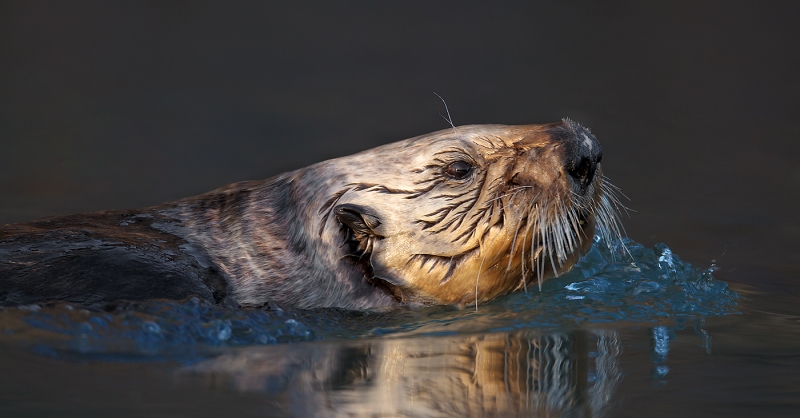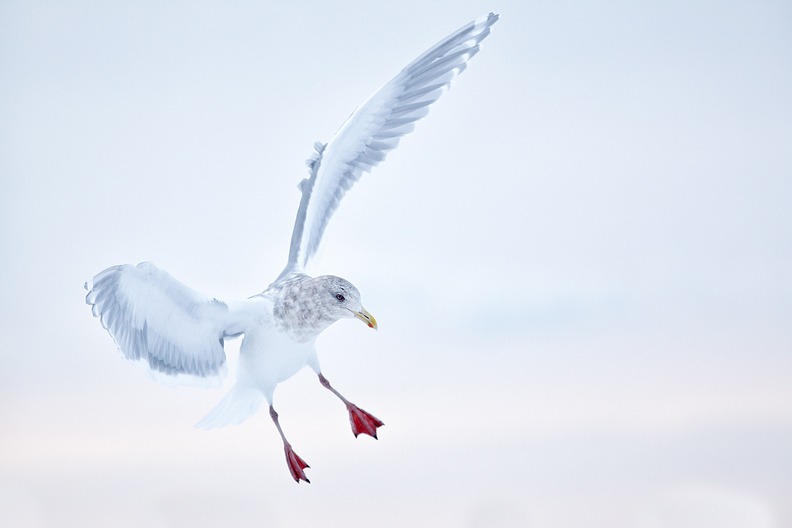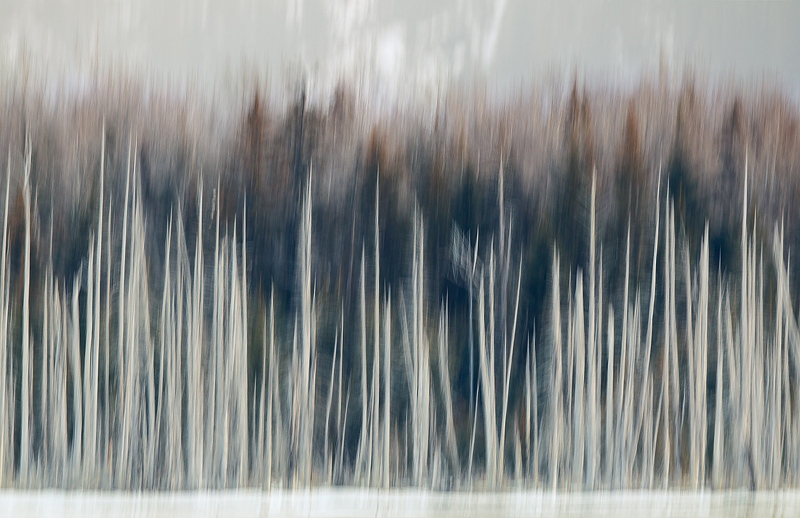What’s Up?
I have committed to doing both the 6-day and the 5-day trips. I have my flights and my hotel room. Now, all that I need is you. There has been considerable interest so far and it looks as if both trips will fill quickly.
The Greatest-ever Bald Eagle Experience IPTs
IPT #1: FEB 25 through the full day on MAR 1, 2020. Six full days: $4799.00. Limit 5 photographers/Openings: 2.
IPT #2: MAR 3 through the full day on MAR 7, 2020. Five full days: $3999.00. Limit 5 photographers/Openings: 2.
From Homer, Alaska:
We will do two two-hour or one four hour boat trip to Katchemak Bay each day. Our schedule will be flexible and weather dependent. We will have numerous and varied mind-boggling opportunities to photograph this hugely popular species. We will be feeding the eagles to attract them into photographic range. The trip is costly because chartering the boat is expensive, the fish are very expensive at $1.25/pound (all on me), the costs of in-room breakfasts and one sit-down meal/day are included, hotel to dock transfers are included, as is lodging (double or triple-occupancy). Single supplements may be available. Please inquire.
We will do most of our flight from the boat until you can no longer lift your lens. We will get off the boat on various islands to photograph the birds both perched and in flight. We will hope for snow.
It is best to register right now so that you can secure your flights and I can arrange the lodging. Register for both trips and apply a $500 discount.
A $2000 credit card deposit is required to hold your spot. Call Jim today, Thursday 9 JAN or tomorrow, Friday 10 JAN to leave your deosit. He will be back in the office on Monday 13 JAN. Your balance will be payable immediately thereafter by check or by credit card plus 4%. Please e-mail me immediately or try me on my cell at 863-221-2372 with any questions or to let me know of your plans. First come, first served.
Not included: your round-trip airfare from home to Homer, AK through Anchorage and back. Your second sit-down meal each day. One hotel night if you are doing both trips back-to-back. Alcoholic beverages at our sit down meal.
There is lots more info on the trip in the captions below each image — all were made in Homer, or in Kachemak Bay, AK.
|
|
Image #1: Bald Eagle calling |
Proximity
We will get close to gorgeous adult eagles; this one was made at only 500mm.
|
|
Image #2: Bald Eagle in flat flight looking down |
Long Lens Flight Photgraphy
We will get to do tons of flight photography both with hand held short and intermediate telephoto lenses and with long super-telephoto lenses — hand held if you wish, but tripod-mounted for most of us.
|
|
Image #3: Immature Bald Eagle: close-up of talons |
Learning Point-Blank Techniques That Apply to All Types o Nature Photography
You will learn a ton about bird photography including why and when to use small apertures: f/16 for this image. And exactly where to focus when creating super-tight close-ups.
|
|
Image #4: Bald Eagle adult banking vertically |
Getting the Right Exposure in Sunny Conditions
You will learn to get the right exposure when working in bright sun. Even when working with starkly black and white subjects. With all three major systems: Canon, Nikon, and SONY. Note: all of the images in this blog post were created with Canon gear.
|
|
Image #5: Bald Eagle adult/upside down start of dive |
70-200mm Lens are Deadly in Homer
As we are photographing from a boat and baiting the eagles with frozen herring, short and intermediate zoom lens can be just what the doctor ordered. The lighter the lens the better. So while the light gathering ability of the 70-200mm f/2.8 lenses is a plus, the lighter weight of the 70-200mm f/4 lenses have a lot going for them … Image #5 was made with the Canon 70-200mm f/2.8L IS lens at 125mm.
|
|
Image #6: Bald Eagle adult/tight flight |
The 300mm f/2.8 Lenses in Homer
These lenses combine a fine and usable fixed focal length with superb light gathering ability. Their weight might be problematic for some … The additional lesson here is to keep firing when the bird gets close. It is not always necessary to include the whole bird in the frame when doing flight photography. As long as you can keep the bird pretty much centered in the frame and in focus you have a good chance of coming up with something powerful.
|
|
Image #7: Bald Eagle sunset flight silhouette |
Flexible Scheduling
The weather in Homer is extremely variable. We do either two 2-hour boat trips or one 4-hour boat trip each day. We plan our sailing times by looking out the window! We often stay out a lot longer than planned. And we often stay out for sunset.
|
|
Image #8: Bald Eagle striking fish |
Variety
We can choose our backgrounds simply by deciding where to position the boat before we begin feeding.
|
|
Image #9: Bald Eagle in falling snow |
The Trip Timing
By going earlier than most Homer trips we have an increased chance of getting some snow. If we do have some falling snow, you will learn how to determine the best shutter speed to get the effect that you want.
|
|
Image #10: Bald Eagle in falling snow |
We Will Walk With the Eagles!
Depending on the wind and the weather, we will — on occasion — get off the boat with our big lenses on a tripod to photograph perched eagles.
|
|
Image #11: Bald Eagle and snow-covered mountains |
You Will Learn to Create Bird-scapes
I called the group together and suggested that using a 70-200 zoomed out that they might be able to create a powerful bird-scape with a small-in-the-frame eagle in the upper right corner and the snow-covered mountains filling the bottom of the frame. Making one with the perfect wing position was extremely satisfying.
|
|
Image #11: Bald Eagle and snow-covered mountains |
You Will Learn the Basic Compositional Skills
Among those is placing the bird well back in a horizontal frame with 3-5 times as much room from the tip of the bill to the frame-edge as from the tip of the tail to the frame-edge.
|
|
Image #13: Bald Eagle on hillside in snowstorm |
You Will Learn to Think and See Creatively
To me, this is a Monet. Can you find the eagle? On all IPTs I share my thoughts with everyone within earshot. And with some who are not!
|
|
Image #14: Immature Bald Eagle pan blur |
You Will Learn the Secrets of Creating Contest-Winning Pleasing Blurs
In extreme low light conditions creating pleasing blurs is often the best way to go, especially if you do. not like working at ISO 25,800 … On the eagle boat, you will learn exactly how to succeed in creating prize-winning sharply focused blurs that put smiles on folk’s faces. You will learn also that creating a killer-good blur is similar to winning the lottery.
|
|
Image #15: Bald Eagle flying in falling snow |
You Will Have Your Eyes Opened With Regards to Shutter Speeds for Flight Photography …
This image was created at 1/800 sec (at f/2.8). Click on the image to enjoy a larger inexplicably sharper version.
|
|
Image #16: Immature Bald Eagle braking to land |
You Will Learn a Huge Ton About Wind Direction and Wing Positions and What They Have to Do With Flight Photography
The braking to land wing position is a very dynamic one. In order to succeed with these, you need the wind from somewhere behind you.
|
|
Image #17: Bald Eagle calling |
Learning About Bird Behavior
Bird behavior is often repeated. The first time that this bird called, I missed the shot. But I stayed with it and made some great images.
|
|
Image #18: Immature Bald perched |
You Will Learn to Use Your AF System to Come Up With Pleasing Image Designs
Whether you are using Canon, Nikon, or SONY I can teach you to master your AF system for static subjects and for birds in flight and in action.
|
|
Image #19: Sea Otter |
It Ain’t Just Eagles!
We may encounter a variety of natural history subjects and will be quick to take advantage of such opportunities.
|
|
Image #20: Glaucous-winged Gull in flight |
White Sky/White Subject Exposures
You will learn to make perfect exposures in soft light/white sky situations with both light (as here) and dark subjects.
|
|
Image #21: Stand of trees dead from salt water intrusion from the big earthquake |
Learn to see and think creatively
I will lead by example and teach you how too see and think like a pro.
|
|
Image #22: Bald Eagle head portrait silhouette |
We Will Be Doing Lots of Small-Group Photoshop Lessons
I am conversant in doing RAW conversions in ACR (Photoshop and Lightroom), in Canon Digital Photo Professional 4 (DPP 4), and in Capture One (my favorite). I am fairly skilled in Photoshop especially with regards to image clean-up. This striking silhouette was created from an image that was exposed for detail on the young eagle’s face.
|
|
Image #23: Bald Eagle two-headed blur |
You Will Learn to Push the Limits and to Take Risks
I went way out of the box for this one by working at 1/8 second. This image made the final round of judging in several major international contests. We will talk at length about flight photography shooting strategies and techniques …
|
|
Image #24: Bald Eagle top shot |
We Will Have Lots of Top Shot Opportunities
Images that depict a bird’s dorsal wing surfaces can be quite dramatic. We will have lots of chances to create top shots of both adult and immature Bald Eagles.

















Amazing images, I sure wish we could tolerate cold!
Geez…. so envious of those who get to go on this trip!
Absolutely love that snowy shot #13!
May i ask: Why do you choose March, and hope for snow, for these trips? I would have thought warmer weather and longer days would be a good time for a trip to Alaska.
Just gorgeous images, Artie.
Best
Tony
I always preferred late-FEB and early March for the eagles, and yes, much greater chance of snow.
Got some time off?
with love, arite
ps: I’ve always loved the Monet. Did you find the eagle?
Hi Artie. My favorite image is “Image #19: Immature Bald perched”. Sure looks like a mammal to me :7)
-Bob
Thanks to you and Maurice for checking up on me.
with love, artie
Hi Artie
Image 19, title needs correcting!!
Cheers
Maurice